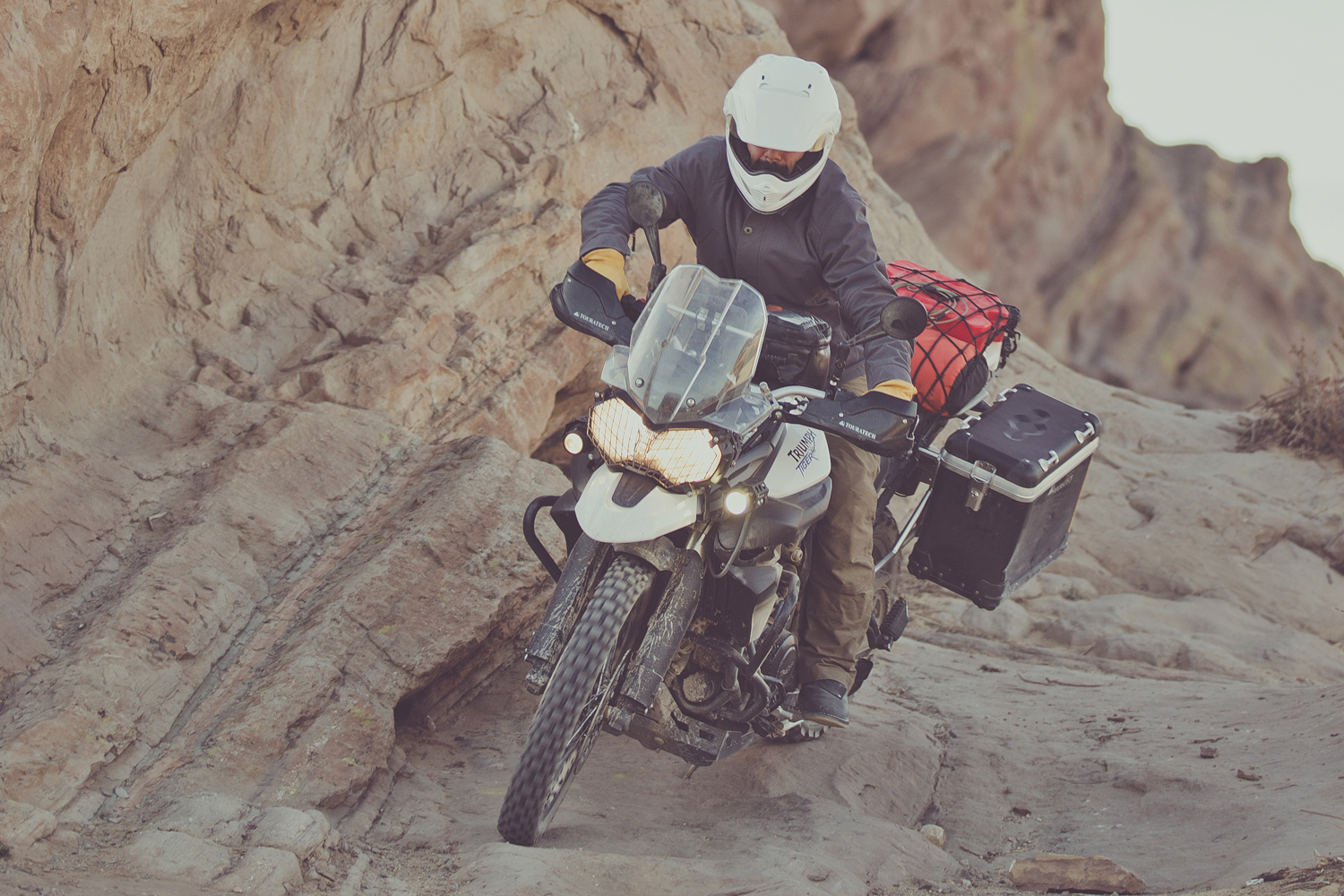Editor’s Note: This article was originally published in Overland Journal, Winter 2014.
Getting a new bike is similar to diving into a new relationship: boundaries are tested, infatuation morphs into true love or utter contempt, trust develops, and sometimes that trust disintegrates. Luckily for me, much like the marriage to my wife, this love-at-first-sight scenario has played out in my favor. But like any relationship, it has taken some work and fine-tuning.
To say that the 800XC comes direct from the factory bone stock is an understatement. In a strategy to boost accessory sales for its dealer network, Triumph left the bike unprotected and unprepared for any substantial backcountry travel.
Starting with the rubber, I swapped the original tires for Continental TKC 80s. These tires simply work and work well. My only complaint after 3,000 miles is that the rear tire is smoked, which is to be expected from an aggressive knobby that has a soft enough rubber compound to keep you railing through the twisties. A Heidenau K60 Scout replaced the rear tire at 3,000 miles. What I’ve given up in off-pavement prowess I’ll gain in longevity and predictability on road.

The next item to address was the foot pegs, which in factory form are comically narrow and slippery. The new units from Pivot Pegz offer an incredible amount of comfort and leverage at the point of contact, which is what some would say matters most. The other point of contact that matters is the handlebar. I’m of average height (5 feet, 9 inches), and rotating the factory bars forward gave me a nice riding position when standing without adding bar risers. To really dial in the feel with both hands, I replaced the stock levers with CNC aluminum expandable units from MotoZen. I chose Touratech handguards for their simplicity.
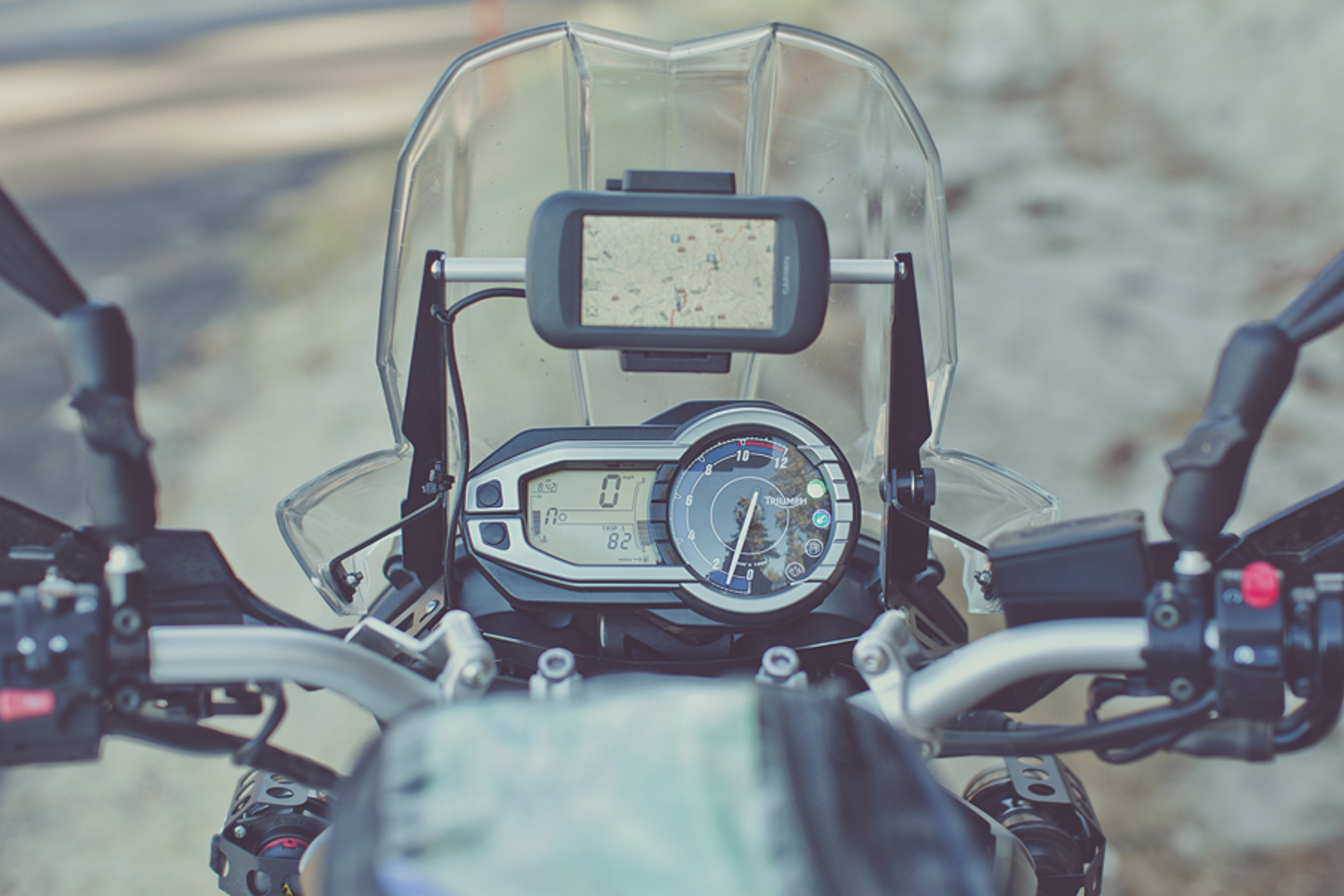

When it came to engine and fairing protection, getting it right was a bit of a challenge. Initially, I went with Touratech engine and fairing crash bars, but after struggling with the all-German instructions for installation, I never felt 100 percent confident in their engineering. My doubts were realized when the bike fell over on soft sand in Joshua Tree National Park, collapsing the crash bar and breaking the turn indicator and plastic fairing. I had also gone with Touratech’s aluminum skid plate and was dismayed at the quality of materials and execution of the design. I knew it was riveted together, which is dubious for a skid plate. I just didn’t realize how unsubstantial the protection actually was until it was on the bike.

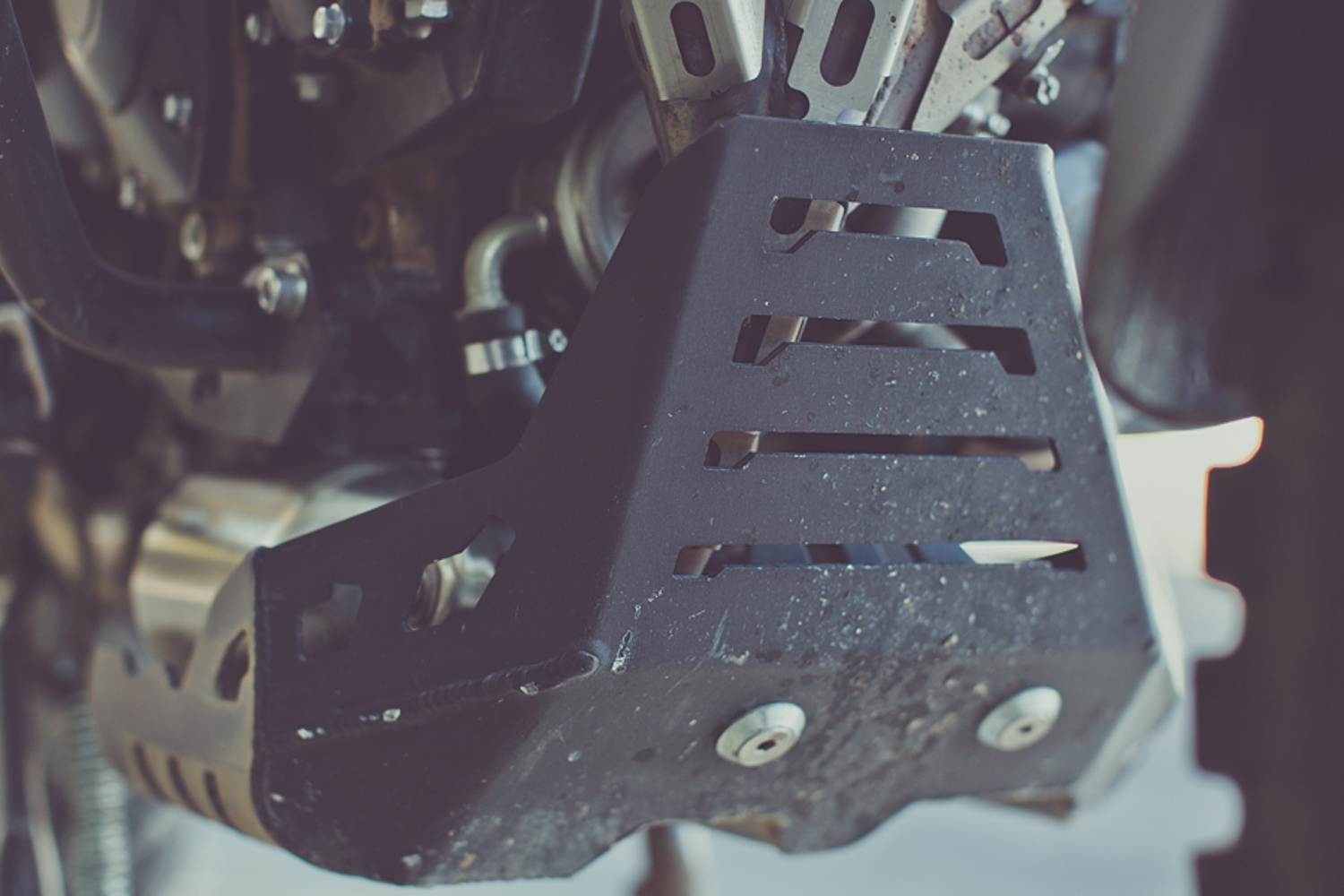
These weak points were all remedied with offerings from AltRider. The instructions are clear, in English, and there is an easy-to-understand installation video online. The protection afforded by the AltRider crash bars is great: I dropped the bike multiple times on Lippincott Road in Death Valley with only the paint on the bars taking the brunt of the abuse. The skid plate also took a beating while doing its job of protecting the underside of the engine and lower front. Additionally, AltRider provided an easy-to-install and well-thought-out radiator guard that all but disappears in its flat-black glory.
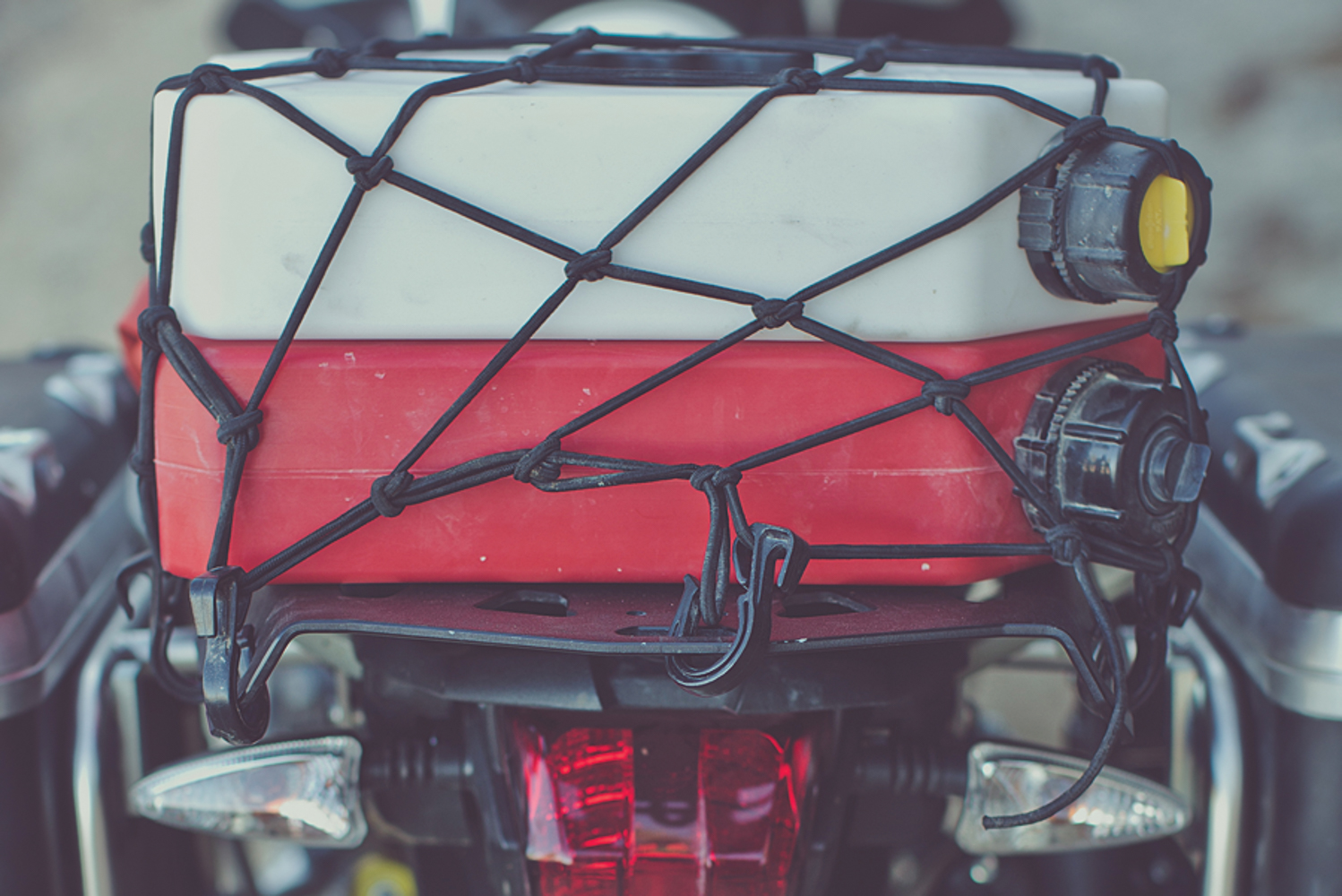
Once protecting the bike was addressed, I moved onto options for carrying gear. In the first installment of this project bike I described my travel style as light and fast, but the reality is I still need to carry and protect my gear—often expensive camera equipment. This can be a daunting task when trying to get across a sandy desert in any part of the world. The Giant Loop Fandango tank bag fit the bill as a padded bag that was both low-profile, yet large enough to carry a full-size DSLR with a lens. I also like what Giant Loop did with the logo design; it’s black on black and subtle.
I’m torn and have yet to make a solid decision on the debate of panniers versus soft luggage. Currently, I’m running Zega Pro panniers by Touratech; they are an elegant solution that is both lightweight and convenient. So far I am able to carry everything I need within the combined 65 liters of volume. Another nice feature is the lashing points on the exterior for dry bags, firewood, tripods, and other ephemera. I attached an AltRider rear luggage rack so I could carry auxiliary water and fuel in Rotopax containers. The rear rack is designed to hold just about any strap you could imagine and comes factory drilled to accommodate Rotopax mounting hardware.
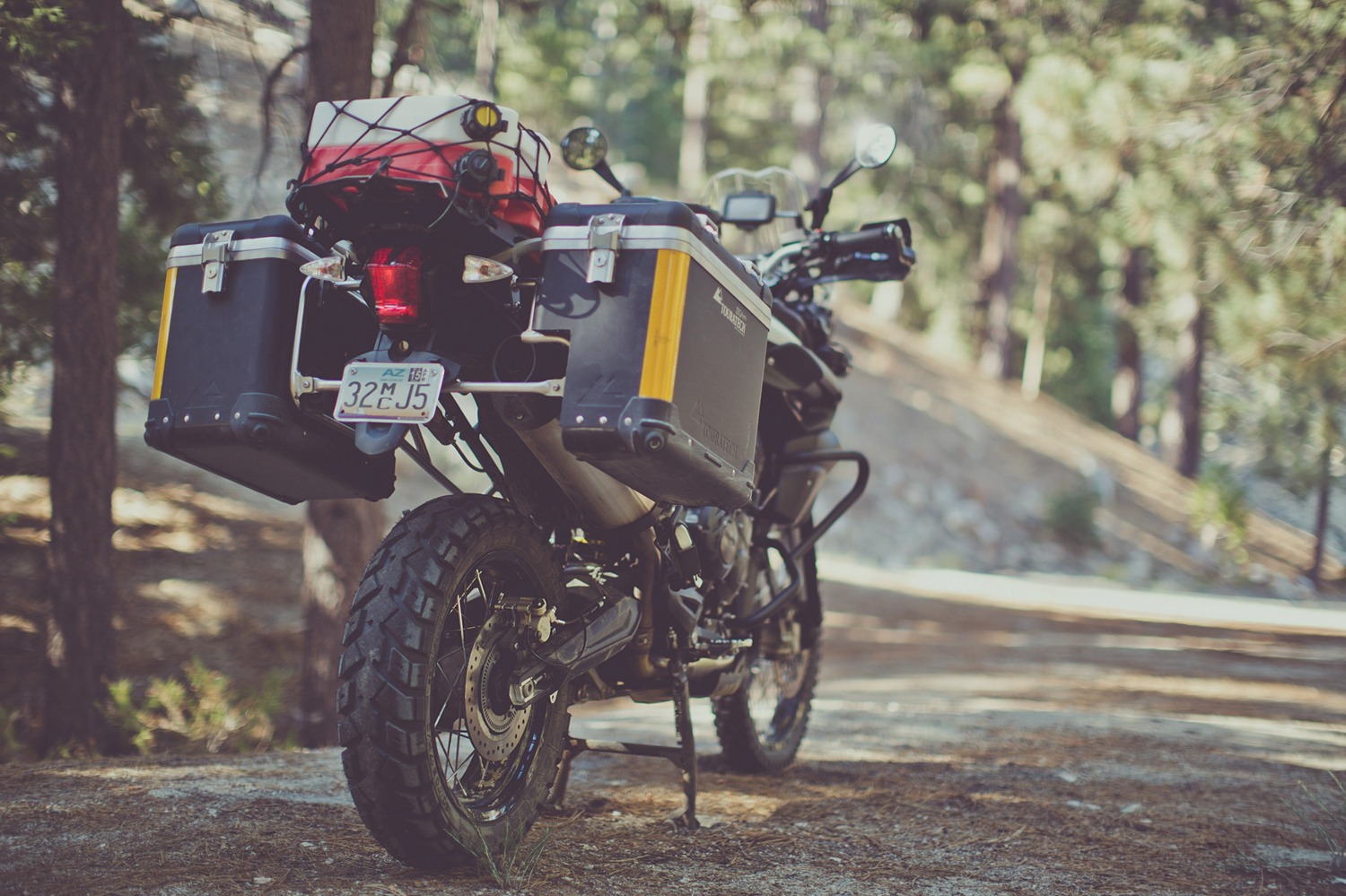
I upgraded the cockpit with the help of a Touratech windscreen adjustment bracket and a GPS mounting bar. This gave me a convenient place to mount my Garmin Montana 650t using the BMW Motorrad mount. In my opinion, this is the cleanest mount available. I also replaced the OEM mirrors with folding Doubletake mirrors. Using the ubiquitous RAM mounts, the mirrors’ 4-inch SAE spec convex lenses—wrapped in indestructible Zytel—are easily adjustable and can be folded completely out of the way.
Hella auxiliary lights were mounted on the underside of the cockpit. I used a combination of a Xenon beam with a wide splash cornering light. Not only does this combo turn night into day, but it also increases your visibility during the sunny hours by giving your lights a wider stance.
To accommodate all of these extra amps I installed a Shorai lithium-ion battery. It weighs 3 to 5 pounds less than a standard lead unit, and I’ve been very impressed with its starting ability—even after leaving the key on while getting someone unstuck, or extended moments of trying to figure out where we were.
After riding the 800XC more than 4,000 miles, both on- and off-pavement, I feel the suspension will be the last and final upgrade to this project. Touratech offers their Explorer HP adjustable rear shock, a plug and play solution. After an easy installation, and setting the sag and the preload, the fully serviceable shock was a dream to ride, even when fully loaded. While at it, I upgraded the front shocks with a set of Progressive front fork springs, also available from Touratech. The off-pavement handling was remarkably improved, giving the bike a more confident feel through rough corners and on nasty climbs.
Though I’ve had the bike out on several short rides, it’s now time to put it—as well as my endurance—to the test on a longer route. Say, 3,000 miles or so. Stay tuned.


